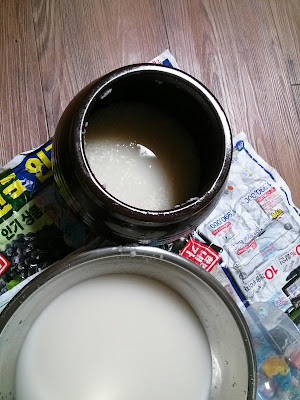I had my first taste of Makgeolli in Korea when my partner and I visited a Hanok Village in Andong. The village was quaint and rustic, but still charming in a simple, down-to-earth sort of way. It was surrounded by green hills and packed neatly with modest Hanok , divided by clay colored dirt roads and short walls of packed earth and ceramic tile. A shallow river with sandy banks calmly drifted by as cicadas croaked relentlessly in the trees. After a day of walking around the village, and getting lost in its nooks and crannies, my companion and I secured lodging and walked to the edge of the village before dark to find something to eat. We settled on one of the local restaurants, and she took care of ordering the food. Shortly after, the customary array of side dishes were delivered to our table, followed by a steaming plate of Pajeon and a large bowl of milky white alcohol. This was Makgeolli; generously served with a deep spoon that is sometimes made fro...

